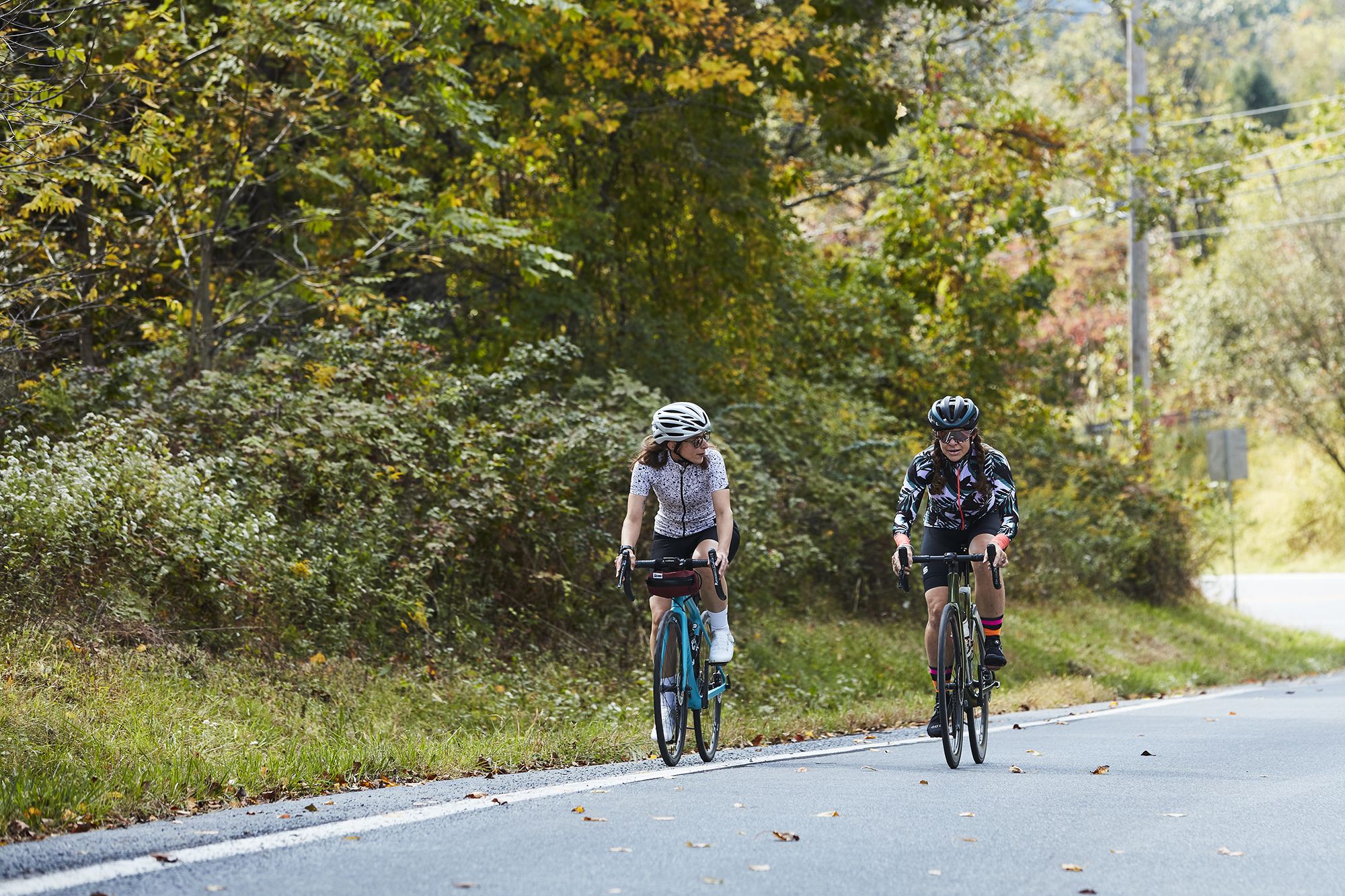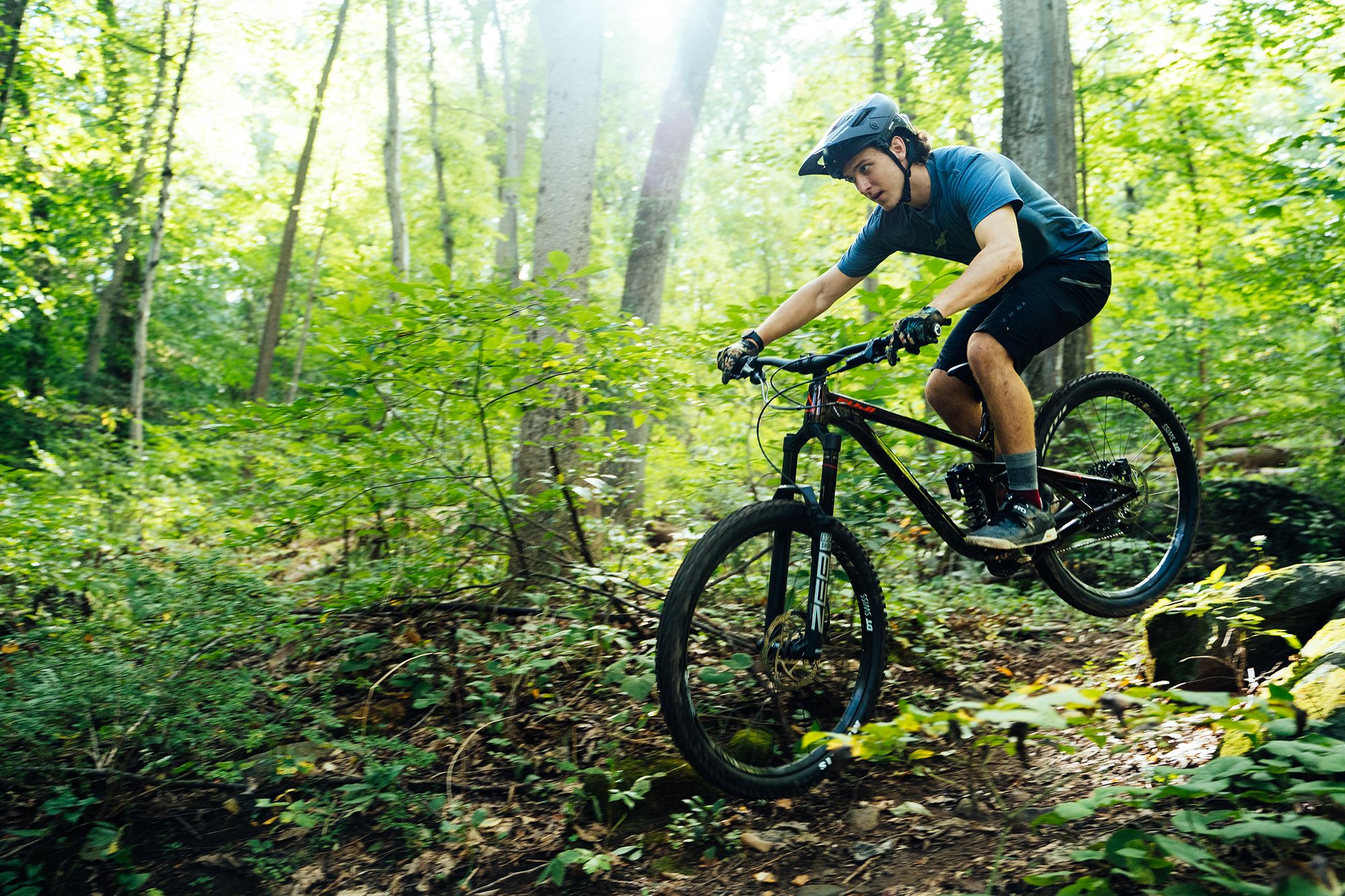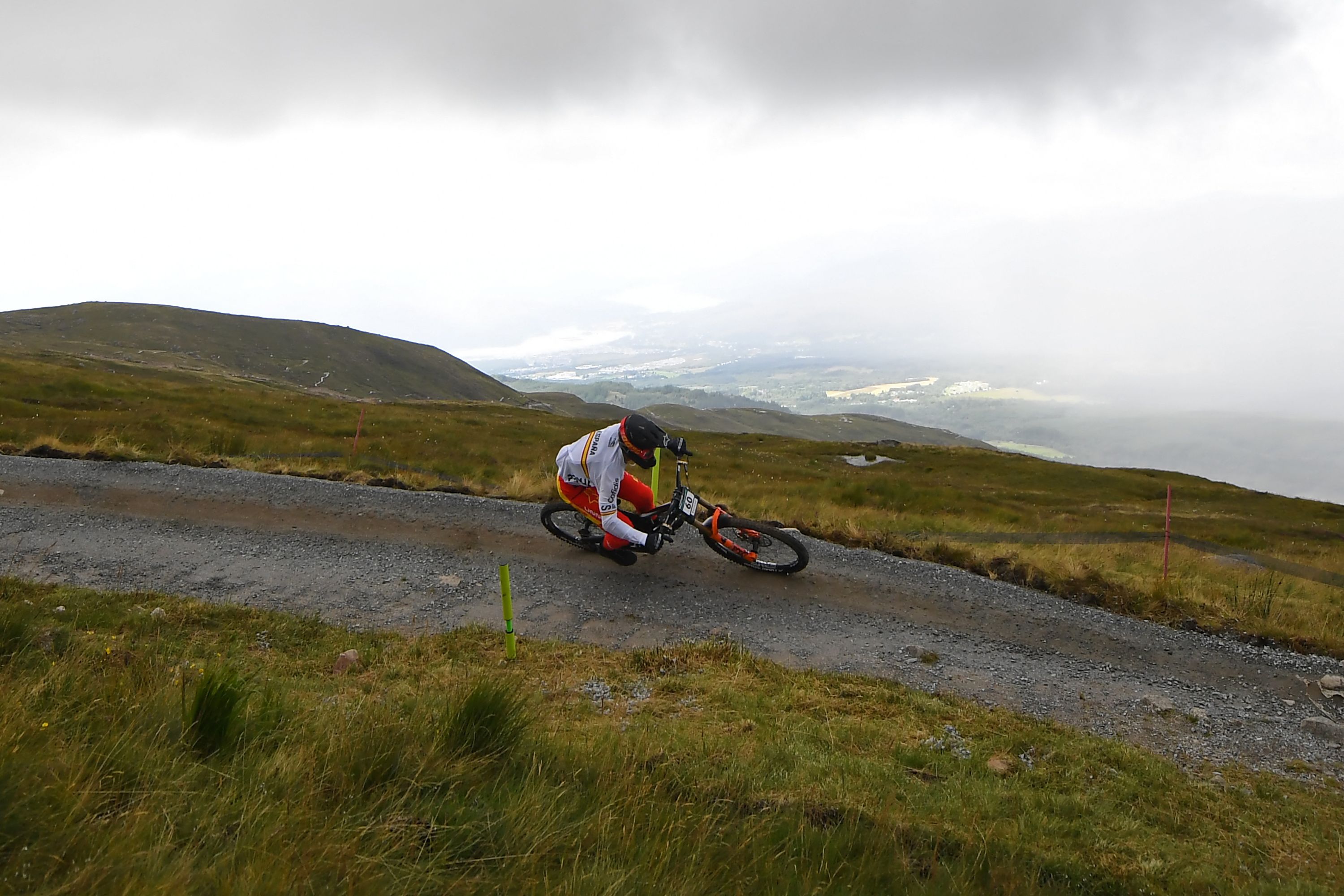Which Of Cycling’s Disciplines Floats Your Boat?
Cycling's various disciplines call for different bikes, attitudes and skillsets. Here are the most popular, and how to enjoy them fully.
If you’re new to cycling, you may be a little perplexed with the many different styles of riding and racing available. Heck, even if you’ve been riding a bike solo on your local roads or bike paths, you may be a strong rider, but still not exactly sure what this whole “gravel” thing is all about.
In descending order from as road-oriented as you can get to as off-road as you can go, here’s your simple guide to the different types of bike rides for you, with intel and advice from pro riders who’ve shifted between the disciplines over the years.
Time Trial

Level of off-road ruggedness: 0
Why People Love It
It’s just you, your bike, and the road in front of you, and the goal is simple—get from point A to point B as fast as possible. “I think time trialing is fun because you go the fastest,” says Alexey Vermeulen, who raced on the WorldTour circuit in Europe before coming back to the U.S. to tackle the gravel and off-road scene, most recently finishing second at the Leadville 100. “When you’re on a time-trial bike and in that aerodynamic position, you get an extra three to four miles an hour of speed. You look down at your computer, and you’re shocked you’re going so fast.”
Biggest Challenge
“The biggest challenge in time trialing is finding a position that’s comfortable enough while still being aerodynamic, and being able to stay in it for long rides,” says Vermeulen.
Time trial bikes are built for speed, not comfort, so you’ll be bent low over the bars, and your back and hamstrings will be working much harder than they would on a road bike. “It takes a lot of trial and error to find that position—and you have to accept that it may not be as comfortable as you’d like it to be,” Vermeulen says. He adds that you can also expect to feel different types of stiffness and soreness after a ride on your time trial bike, because of that extreme body position.
Best Training Tip
“Spend time in [the time trial] position at race speed—pushing hard completely changes how that position is going to feel,” Vermeulen says. “Try to do at least a couple of rides at race pace, in that position, that are the same distance as the race you’re targeting.”
Best Racing Tip
It’s all about your pacing. Time trials are hard because there’s no group to stay with, you’re entirely self-governed. That can mean it’s easy to go out too hard, or to leave too much in the tank by the end of the race.
“Have a strategy for pacing, whether you’re looking at your own time on a similar distance and course, or you’re looking at the past results of people who are around your level,” says Vermeulen. “I find the biggest challenge for me is that I tend to start way too hard, then realize I can’t hold it for the entire time.” Practice pacing in training to make the most of it come race day.
Road

Level of off-road ruggedness: 0-1
Why People Love It
“Road racing and riding is all about team camaraderie,” says Vermeulen. Whether you’re a pro racer or you’re racing on a local club team or you’re simply jumping into group rides, riding on the road is all about the people around you. “Road lets you create these deep friendships with teammates and people you ride with regularly, and you can really help each other out,” he adds.
Biggest Challenge
Road riding and road racing are both very technical and group skill-dependent. While you may have a huge engine from riding the indoor trainer, being able to draft behind another rider, corner smoothly, and climb or descend safely are equally (if not more) important. “I’ve noticed that people don’t spend enough time on skills practice,” says Vermeulen. “But road racing and even road riding in a group require a certain level of skill for it to feel fun and safe.”
Starting with a beginner local group ride—even if you have a super-high FTP on Zwift—is a good place to start to dial in those outdoor skills.
Best Training Tip
“Ride new roads at least once a week,” says Vermeulen. If you’re planning to jump into some racing or ride with a new group, having the ability to easily navigate a new stretch of road is a great skill.
Plus, new roads force you to dial in new angles of corners, new gradients of descents, and new “fun” surprises like a pothole that you have to dodge at the last second. “Riding new roads forces you to really pay attention to your skills and the road ahead, compared to the local roads that you can basically ride in your sleep,” says Vermeulen.
Best Racing Tip
Road racing is only fun if you’re in the pack—getting dropped out of the back of the peloton makes for a long, lonely race day. “Try to get to a place where your skills are good enough to stay on the wheel and be comfortable there [when drafting], because otherwise it’s so much harder if you can’t comfortably sit on someone’s wheel,” Vermeulen says.
Gravel

Level of off-road ruggedness: 3-6
Why People Love It
“Gravel is exactly what everybody wants to make it,” Vermeulen says. “You can go out and just have fun and drink whiskey at the aid stations, or you can race it as hard as you can. I think that’s why so many people have switched to gravel: There’s a lot less pressure than on the road in so many ways.”
Biggest Challenge
Gravel can be technically challenging if you’re coming from a road riding background, as some courses can include pretty technical sections. It’s also harder to gauge how long a race will take you: Most road cyclists will have a sense of how long it takes to complete an 80km road ride, but an 80km gravel ride could take double the time, or close to the same time.
“The biggest challenge that people have with gravel is picking the right length course for their skills and abilities,” says Vermeulen. “I think that trend right now is that longer equals better, but that’s not true. You want to pick a course length that’s a challenge but won’t feel miserable.”
Best Training Tip
Your gravel bike may look like your road bike, but don’t be fooled: It’s a very different animal, especially where your tires are concerned. There are many different types of gravel tires on the market now, and they range from closely resembling road tires to looking like MTB tires circa 1995.
Depending on how gnarly the gravel is that you’re riding, different tires will be better for different situations. “Every course is a lot more fun with the right tire choice and tyre pressure,” says Vermeulen. “Learn your tires, learn how to change them, and how to fix basic things on your bike, so that you’re ready if things go wrong. It’s a lot more fun when you do that during training versus trying to figure it out during a race.”
Best Racing Tip
“Keep track of where you’re going and what you’re eating,” says Vermeulen. “It’s sometimes easy to get lost out there, since you may be riding alone at some points in the race. It’s also easy to not eat enough if the course is rough, and once you’ve bonked, it’s a lot harder to enjoy the day.”
He recommends spending time looking at the course profile and map beforehand. Most races have GPX files you can download, and will have information available on the terrain, the key turns, and the number of aid stations on course.
Vermeulen notes that in addition to knowing the race distance, make sure you check the elevation profile: Gravel races often have a lot of elevation, and that can completely change how long the race will take, and subsequently, how much fuel you’ll need.
Bikepacking

Level of off-road ruggedness: 0-8
Why People Love It
It’s a way to see new places, and as track World Champion and long-distance endurance cycling expert Ashton Lambie has put it, it’s a way to travel in a self-contained kind of way, carrying everything you need with you like you’re in your own private spaceship.
Biggest Challenge
If you’re excited about the idea of bikepacking, you can do it on a tight budget. But the gear can be intimidating and pricey if you want to have a fully tricked-out bike. There are hubs that allow you to pedal-power your phone, lights, and cycling computer chargers. The panniers and various bike bags can be pricey. And of course, all of this may cause you to want a new, burlier bike versus trying to strap big bags onto your aero carbon road bike.
Best Training Tip
Don’t look at your pace—enjoy the ride. First of all, if you’re toting all of your gear, it’s going to weigh down your bike and you’ll be slower than usual. But second, you’re not bikepacking in order to speed from one destination to the next.
Think of bikepacking in relation to road riding like you would hiking compared to trail running. Hiking involves stopping for snacks, taking a break whenever your legs are tired, and wallowing in the scenery. Bikepacking should do the same.
Best Racing Tip
Bikepacking typically isn’t done in racing format, though there are a few longer events like the Flint Hills Ultra, which Lambie recently won, that call for anywhere from five to 10 days on the road on your bike. If you’re attempting a race like this, pre-planning and as much logistical support as you can muster are everything. Don’t head in assuming it’ll be easy to restock on food and water—have stops marked along the route instead.
Mountain Biking

Level of off-road ruggedness: 6-9
Why People Love It
“There’s such a broad range of what can be considered mountain biking: you can go out on a mountain bike on the bridle path near your house, or you can go ride backcountry singletrack trails with big features,” says Noble. “It really meets you where you are. It’s just so fun being in the woods and just playing like a kid.”
Biggest Challenge
“The bike can be a little overwhelming for people, as can finding the best places to ride and knowing what trails to get started on,” says Noble. “It can be a little intimidating at first, especially when you’re heading into the woods onto trails for the first time.”
Best Training Tip
Use an app like TrailForks or AllTrails that has trail maps specific to mountain biking and look for trails that match your ability level—green for beginners, blue for intermediate riders, black diamond for experts.
For new riders, Noble suggests working on small features to make big skills gains. “It’s amazing how much better you can get at mountain bike skills on things you’re already comfortable with,” says Noble. That small stick on the trail that you’d normally roll over? Use that as a chance to practice unweighting your front wheel so when you come across a slightly bigger log, you know how to handle it. And always, always, always look where you want to go, rather than down at the ground directly in front of you, says Noble.
Best Racing Tip
“In mountain bike racing, I’m mentally fatigued before I’m physically fatigued,” says Vermeulen. “Pay attention to that feeling: It’s dangerous to be trying to push the pace when you’re mentally fatigued, because it’s a lot easier to make mistakes. You need to find an effort level that you can hold that is sustainable over the whole course.”
Enduro

Level of off-road ruggedness: 7-9
Why People Love It
Enduro racing includes timed downhill segments, and you’re required to ride the “transfers” between each segment, which can include a lot of climbing… But you don’t need to rush!
“You’re riding these really fun and technical trails downhill, which I think is just fun on its own,” says Noble. “Enduro races are fun in particular because they can be very communal. There are no time segments on the transfers between downhill runs, so you can ride with friends between each segment. You can take it as seriously or not seriously as you want and still have a really great day out with a bunch of other rad people.”
Biggest Challenge
In addition to the technical features and skill required to ride smoothly downhill, you have to be able to climb on your bike. “Most races include some pretty long transfers,” says Noble. “You want to be in shape enough that you can do those transfers and not be so exhausted that it’s hard to recover between each run.”
Best Training Tip
In addition to honing your skills by actually riding downhill on technical terrain, Noble says making sure you’re riding uphill regularly is extremely helpful. “The easier the transfers are, the more energy you have for the actual timed segments,” she says.
Best Racing Tip
First and foremost, do course recons—doing a ride of the actual race course ahead of race day, so you can see the various features and obstacles you’ll be contending with—if at all possible. The worst thing you can do is head into an enduro segment having no idea what’s coming up on the trail.
“The problem is that there’s a limited number of recon laps that you can do,” Noble says. “It can be really overwhelming for people to have five or six stages that they’re trying to memorise. You won’t be able to remember everything, but as you ride each trail, just focus on things that will be hugely detrimental if you aren’t aware of them.” (Make a couple of notes about each run as you finish pre-riding, and that way, you can refer back to them right before you start your race run!)
Downhill Mountain Biking

Level of off-road ruggedness: 9-10
Why People Love It
“Downhill is great because you get to go really fast on a super-duper capable bike,” says Noble. “It’s also super short: You’re done in just a few minutes. There are so many different ways to get down the hill and you only have one chance to do it.”
Noble also loves that because it’s one descent, you have time during practice to really dial in small pieces of the course and see where you can gain milliseconds in certain corners or over certain features. “I love really breaking a course down and thinking, ‘If I take this corner this way, is it faster… and how does it set me up for that next corner?’” she says.
Biggest Challenge
Obviously, equipment is a major barrier, since most people don’t have downhill bikes lying around in the garage. The bikes themselves are much burlier than a cross-country or trail mountain bike, and can feel intimidating.
“But the biggest challenge is the course itself because it can be super intimidating,” says Noble. “I’ll be honest, you can just participate in this sport for fun, but it’s going to be too technical and too intimidating for a lot of people.”
If you want to race downhill and haven’t before, look for a course specifically considered “beginner friendly,” and spend at least a day or two at a downhill park just riding for fun first.
Best Training Tip
In addition to spending time actually going downhill, Noble is a fan of focusing on overall strength and building muscle at the gym. “The riding is so burly that you’re basically doing a thousand push-ups on every run,” she says. “You want to be strong enough to handle what the trail is throwing at you, and you’re riding a pretty heavy bike. I also have found that the stronger I get, the safer I feel about crashes. Crashes are part of the sport, and the more agile, limber, and protected my body can be by having this muscle, the better.”
Best Racing Tip
“Visualise success and definitely do not skip your warmup,” says Noble. Sure, you’re ultimately going downhill and letting gravity do a lot of work, but you’ll still be maxing out your heart rate and pedalling as hard as you can in the moments where you can pedal. “Spin around and do a couple runs on a different trail before you drop in for your race,” says Noble. “You wouldn’t do any other bike race without a warmup, but with downhill, I know it’s easy to accidentally show up at the start line cold.”
READ MORE ON: bikepacking cycling types dh Enduro gravel mountain biking road



